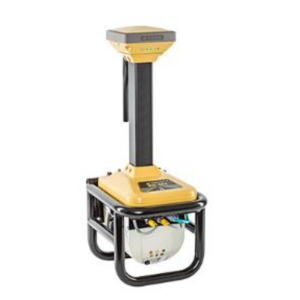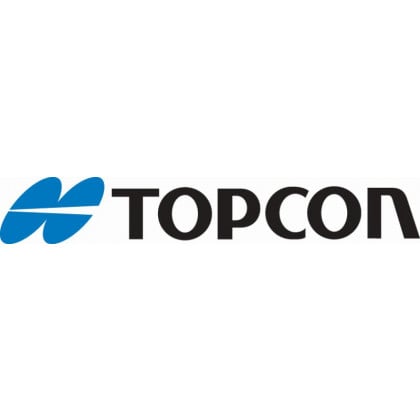

Mobile Laser Scanner in Runway Resurfacing Project
Completely removing and replacing a 1km-long airport runway is a mammoth undertaking. Doing so in just four days seems to border on the impossible. But that’s exactly what was achieved in the case of Guglielmo Marconi Airport in Bologna, Italy, where Topcon’s SmoothRide system was employed to ensure the ambitious operation was completed with optimum efficiency and precision.
Mobile Laser Scanner in Runway Resurfacing Project
How SmoothRide was used to resurface 1km of an airport runway in four days
With the ultimate aim of maximising aircraft safety during take-off and landing phases, lead contractor Costruzioni Generali Infrastructure (CGI) was tasked with uprooting and relaying the 66,000 sq m runway, making sure the new track had a smooth connection with the surrounding surfaces. What’s more, while such a project would usually be carried out over several weeks, the only available interval was a period of 102 consecutive hours or just over four days.
With the project involving the coordination of 25 companies, 500 people and 450 vehicles, CGI required a technology that would make the process run as smoothly as possible. The contractors chose to work with Topcon, using their SmoothRide system to make the process run without a hitch.
Manuel Ferrara from CGI explained: “Due to the time constraints, we needed a stringent logistic organisation of all personnel in order to minimise inefficiencies and make sure we didn’t lose even one minute. It was necessary to foresee every single aspect of the construction site, with dozens of tasks needing to be completed simultaneously. Production was planned to the minute.”
Due to the time constraints, we needed stringent logistic organisation of all personnel in order to minimise inefficiencies and make sure we didn’t lose even one minute.
- Manuel Ferrara, Costruzioni Generali Infrastrutture
Initial Ground Scan
Before the existing runway could be removed, Topcon’s RD-M1 road scanner was used to conduct an initial scan, which was performed at night at a speed of 80km/h, taking two hours. This data was then processed by Magnet Collage software and translated into an exact representation of the runway in a 3D environment. When it came to redesigning the surface, Magnet Resurfacing software was used to analyse the 3D model and finalise plans. Collecting such a large amount of data meant that every imperfection in the existing service was captured in the model. Traditional surveying methods only collect data at certain points, so any imperfections in a surface between the points would not be captured and would, therefore, be replicated in the new surface. This means that the removal and resurfacing created a completely smooth surface by removing and adding exactly the correct amount of asphalt to compensate for any existing undulations in the surface.
“The processing of the scanned surfaces was carried out very quickly”, said Cristiano Volz, product sales manager for construction at Topcon Positioning. “It was, therefore, possible to make a real-time comparison between the state of the track and the project plans, identifying where any improvements to the design solutions were necessary and correcting any errors.”
It was then time to bring the plans to life.
Topcon’s Machine Control software was used to interact with all the machines engaged in the work, including milling machines and pavers. Firstly, five machines equipped with RD-MC Machine Control carried out the first asphalt milling, removing between 1cm and 5cm of the surface, bringing it in line with the project’s definitive surface specification. This first run then acted as the fundamental guide for the subsequent machines fitted with automatic control systems to use as a reference, continuing to remove the underlying layers autonomously.
Once the original runway was completely removed, the same profile set by the first milling was then followed exactly when it came to laying down the new pavement using Voegele pavers and, finally, applying the surface layer of a bituminous conglomerate.
Topcon’s integrated system provided us with a considerable advantage in terms of precision of intervention, coordination of the machinery used and optimisation of the project. - Manuel Ferrara, Costruzioni Generali Infrastrutture
An integrated approach
Throughout the entire process, it was essential that the machinery worked quickly but with pinpoint accuracy, and this came down to full integration between design, control and execution. Thanks to the precision of the milling, subsequent machines were able to simply copy it reliably, they didn’t need 3D correction systems installed as the plan was already perfect in terms of dimension and continuity.
Discussing how central Topcon’s technology was to the success of the project, Ferrara said: “Topcon’s integrated system provided us with a considerable advantage in terms of precision of intervention, coordination of the machinery used and optimisation of the project. The challenges were tackled with the help of technology from the start of and throughout the project, which enabled interaction between what was planned and the actual machines used to execute this plan. It also allowed for an open and constructive dialogue and extensive collaboration between all parties involved.”
The absence of conventional systems such as motorised total stations, which would have required continuous monitoring, and the simultaneous presence of numerous trucks for the transport of milled material also helped to get the project completed on time, as the milling machines could work continuously with no unnecessary downtime. The use of six pavers at a time also allowed for a spread in record time.
What results is an airport runway that, after just four days’ work, has raised the safety standards of the Guglielmo Marconi Airport, not only improving take-off and landing phases but also optimising the safe and rapid evacuation of aircraft after landing.
Ferrara concluded: “Without SmoothRide’s integrated satellite system, it would have been really difficult to do a job of this size in such a short time and with so many people working together. In the past, we’ve carried out reconstruction works on airport runways using conventional methods, but the conditions were clearly different here, with shorter lengths and different execution times. This work truly highlighted the full potential of Topcon’s integrated system.”
Do you have questions about this case study?
Get in touch with Topcon, and they would be happy to answer any questions you have about pricing, suitability, availability, specs, etc.



![3月21日-封面[1].jpg](https://cdn.geo-matching.com/voeE1ywo.jpg?w=320&s=6b3b1a0215d770f8797653e9202a8f52)





